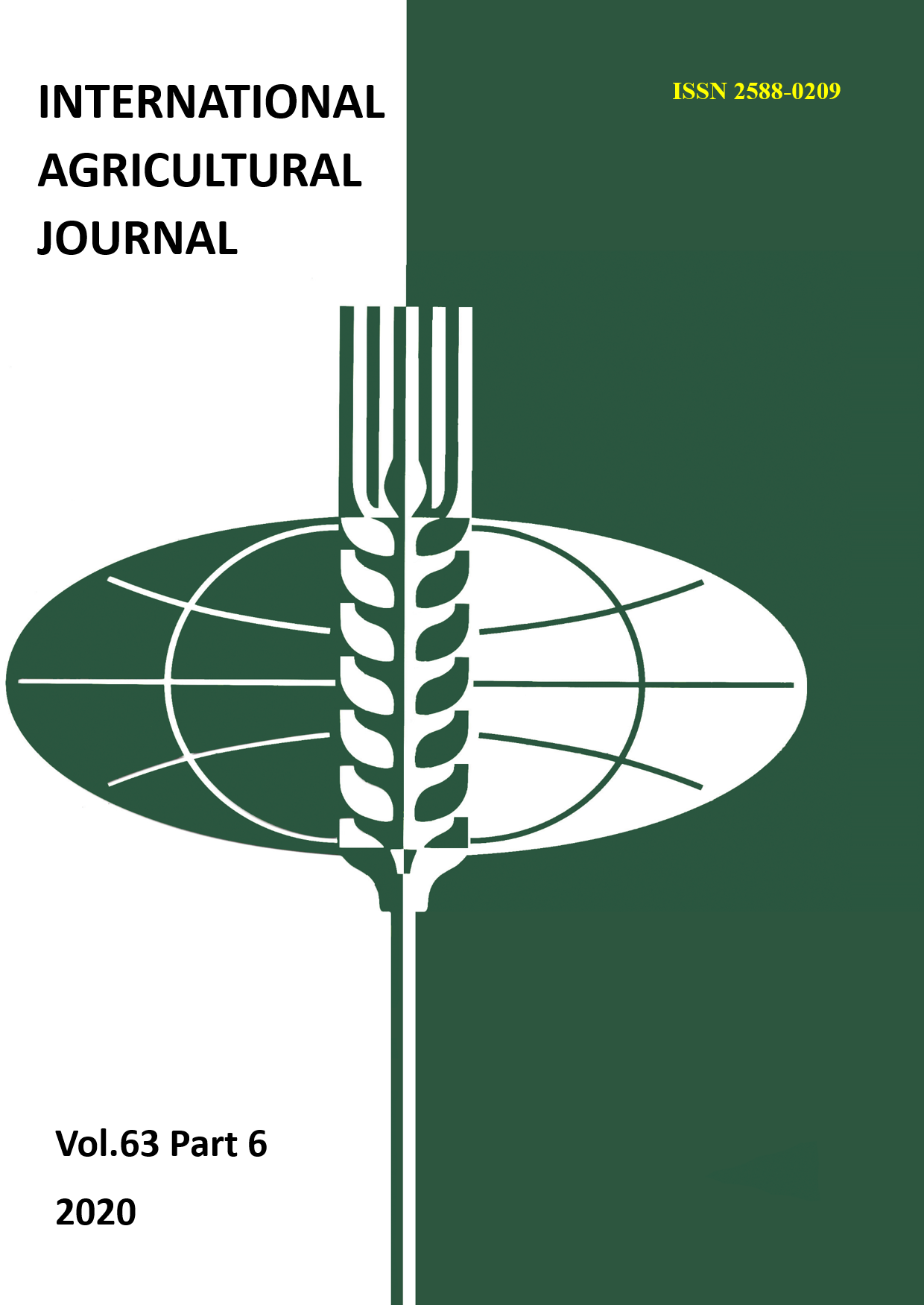THE ROLE OF SUPPLY AND MARKETING COOPERATIVES IN INCREASING THE SHARE OF FARMS IN THE VALUE-ADDED STRUCTURE OF FOOD CHAINS
Main Article Content
Abstract
The article discusses the role of supply and marketing agricultural consumer cooperatives in the activities of farms. The aim of the study is to identify priority areas of cooperation that allow increasing the share of farms in the structure of added value of food chains. As part of the study, a survey of farms in the Penza, Orenburg regions, the Chuvash Republic and the Republic of Mordovia was conducted to identify the main sales channels of products, assess the directions and extent of informal farmers ' cooperation. To assess access to more profitable sales channels, a comparative analysis of the sales prices of farms, agricultural organizations and marketing cooperatives was conducted. In order to assess the benefits of farmers ' participation in the activities of supply cooperatives, the prices of sales of certain types of resources by supply cooperatives to their members were compared with the prices of producers of these resources and with average retail prices. It is revealed that the participation of farms in marketing consumer cooperation does not always lead to their access to more profitable sales channels. More than 40% of farmers, mainly in crop production, interact with other farmers in the implementation of certain economic functions. The most popular area of informal cooperation is the use of agricultural machinery. About 65% of farms have the opportunity to sell products directly to processing enterprises, 27% of farmers use short supply chains, selling products to the final consumer. From the point of view of increasing the share of farms in the structure of the added value of the food chain, it is advisable to develop supply and service cooperatives in crop production, and in animal husbandry, the development of processing cooperatives should be a priority.
Article Details
References
2. Sagdieva EH.A. Razvitie i sostoyanie krest'yansko-fermerskikh khozyaistv v Respublike Tatarstan i Penzenskoi oblasti (po materialam Vserossiiskikh sel'skokhozyaistvennykh perepisei 2006-2016 gg. i polevykh issledovanii 2015-2018 gg.) // Selo Rossii. 2019. № 2. S. 47-72.
3. Golovina S.G., Loretts E.E., Mikolaichik I.N., Smirnova L.N. Problemy razvitiya fermerstva v slozhivshikhsya usloviyakh sredy // Agrarnyi vestnik Urala. 2019. № 8. S. 65-74.
4. Tod N.A. Metody optimizatsii protsessa sbyta sel'khozproduktsii fermerskikh khozyaistv // Ehkonomika sel'skogo khozyaistva Rossii. 2020. № 5. S. 88-92.
5. Runova E.V. Osobennosti razvitiya malykh form khozyaistvovaniya na sele (na primere Chistopol'skogo raiona Respubliki Tatarstan) // Fundamental'nye i prikladnye issledovaniya kooperativnogo sektora ehkonomiki. 2019. № 1. S. 124-130.
6. Butorina G.YU. Malye formy khozyaistvovaniya v APK Tyumenskoi oblasti: problemy i perspektivy razvitiya // Agroprodovol'stvennaya politika Rossii. 2019. № 3-4. S. 27-31.
7. Galikeev R.N. Kooperatsiya kak faktor razvitiya malykh form khozyaistvovaniya na sele // Vestnik BIST. 2020. № 1. S. 59-64.
8. Bashmachnikov V.F., Frolova E.YU. Razvitie proizvodstva moloka i myasa krupnogo rogatogo skota v lichnykh podsobnykh i fermerskikh khozyaistvakh v ramkakh kooperativnykh sistem // Fundamental'nye i prikladnye issledovaniya kooperativnogo sektora ehkonomiki. 2020. № 3. S. 85-95.
9. Maksimov A.F., Tehn A.D. Sel'skokhozyaistvennaya kooperatsii v prodovol'stvennykh proizvodstvenno-sbytovykh tsepochkakh (na primere molochnoi produktsii) // Fundamental'nye i prikladnye issledovaniya kooperativnogo sektora ehkonomiki. 2019. № 5. S. 32-40.
10. Kostyaev A.I., Shepeleva E.A. Prodovol'stvennye tsepochki s korotkimi postavkami v razvitii sel'skikh territorii // Agrarnaya nauka Evro-Severo-Vostoka. 2019. № 6. S. 632-644.
11. Alemu A.E., Maertens M., Deckers J. et al. Impact of supply chain coordination on honey farmers’ income in Tigray, Northern Ethiopia. Agric Econ 4, 9 (2016). https://doi.org/10.1186/s40100-016-0053-x
12. Carbone A. Food supply chains: coordination governance and other shaping forces. Agric Econ 5, 3 (2017). https://doi.org/10.1186/s40100-017-0071-3
13. Dibirov A.A. Formirovanie prodovol'stvennykh tsepei postavok i ikh vliyanie na razvitie sel'skikh territorii // APK: ehkonomika, upravlenie. 2020. № 10. S. 95-108.
14. Kudryavtsev A.A., Karmyshova Y.V. Industry aspects of farm access to high value-added supply chains. E3S Web Conf., 176 (2020). https://doi.org/10.1051/e3sconf/202017605005

